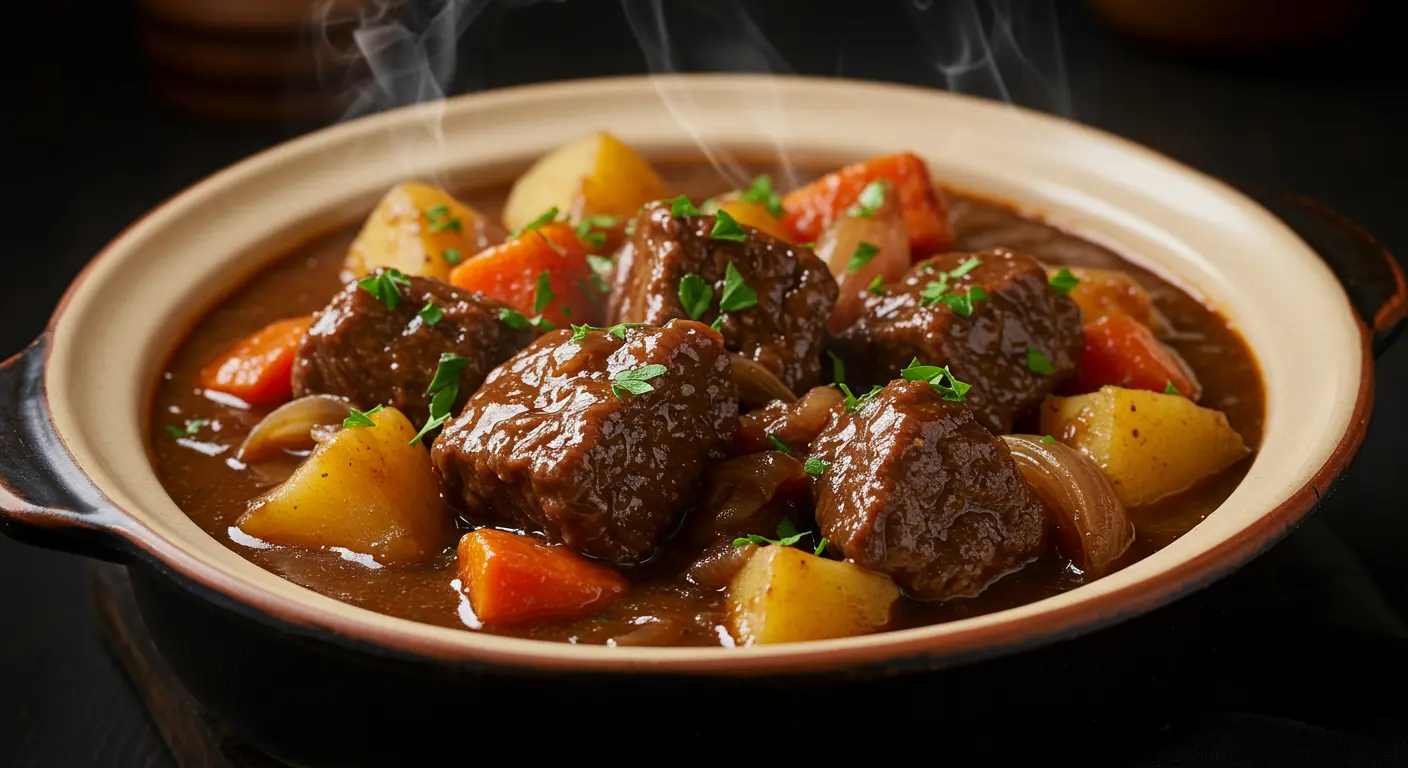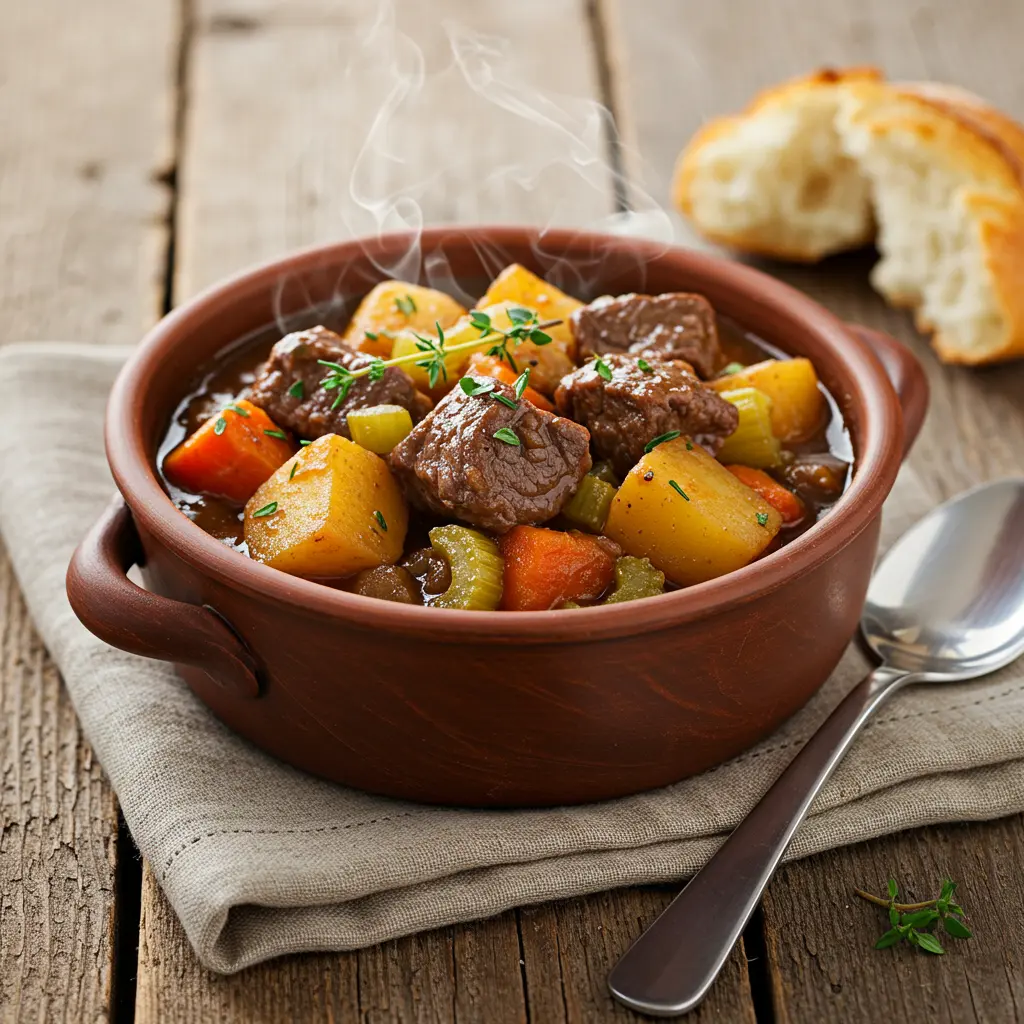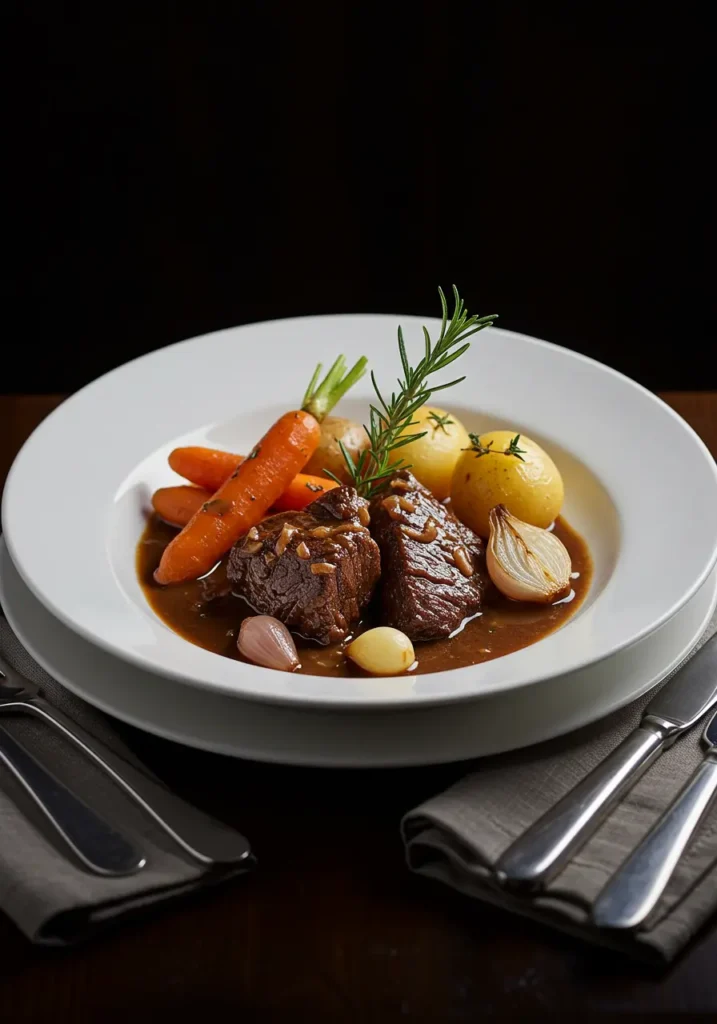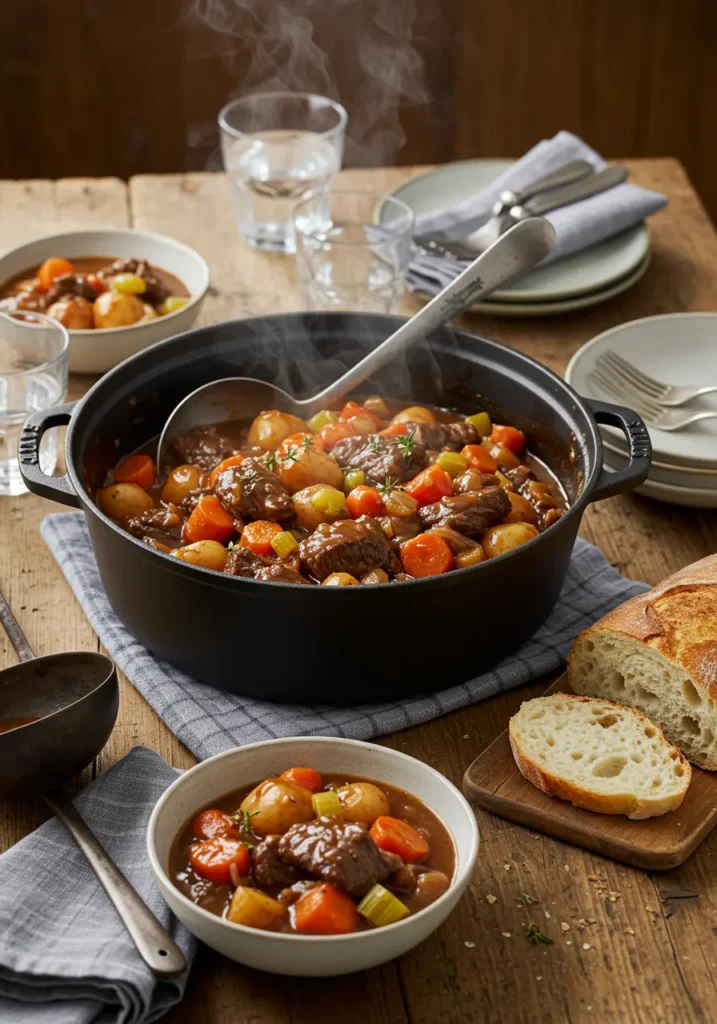How to Make Puerto Rican Beef Stew Like a Local

There’s something magical about Puerto Rican beef stew, or “carne guisada” as it’s known locally. This hearty dish captures the essence of Puerto Rican cuisine—rich flavors, tender meat, and the perfect balance of spices that tell stories of the island’s diverse culinary heritage. Whether you’re seeking comfort food on a chilly evening or wanting to explore authentic Caribbean cooking, this Puerto Rican beef stew recipe delivers warmth and satisfaction with every spoonful.
In this comprehensive guide, we’ll walk through everything you need to know to create an authentic Puerto Rican beef stew that would make any abuela proud. From selecting the right ingredients to mastering traditional techniques, you’ll learn how locals have perfected this dish over generations.
Table of Contents
Understanding Puerto Rican Beef Stew
Before diving into the cooking process, let’s understand what makes Puerto Rican beef stew unique among the world’s many beef stew variations. Unlike its European counterparts, this beef stew (carne guisada) features a distinct flavor profile influenced by the island’s Spanish, African, and Taíno roots.
The foundation of authentic Puerto Rican stew begins with “sofrito”—a flavorful blend of aromatics including onions, peppers, garlic, cilantro, and culantro (recao). This essential base provides the signature taste that distinguishes Puerto Rican cuisine from other Latin American cooking traditions.
Another key differentiator is the use of “adobo” seasoning and “sazón,” spice blends that give the stew its characteristic depth and color. Puerto Rican beef stew typically features potatoes, carrots, and sometimes olives or capers for added complexity, all simmered in a tomato-based sauce that becomes rich and velvety.
Recipe Card

Puerto Rican beef stew
Ingredients
Equipment
Method
- The journey to exceptional Puerto Rican beef stew begins with proper marination. In a large bowl, combine the cubed beef with adobo seasoning, olive oil, vinegar, and minced garlic. Mix thoroughly to ensure each piece is well-coated. Cover and refrigerate for at least 2 hours, though overnight marination will deliver the most flavorful results.
- This marination process is crucial for authentic Puerto Rican beef stew. It not only tenderizes the meat but also infuses it with the foundation flavors that define the dish. Many local cooks insist this step cannot be rushed if you want truly authentic carne guisada.
- While store-bought sofrito can work in a pinch, making your own delivers unparalleled freshness and flavor for your Puerto Rican beef stew. To prepare homemade sofrito, combine onion, bell peppers, garlic, cilantro, and culantro in a food processor. Pulse until you achieve a fine, paste-like consistency.
- Sofrito is the heart and soul of Puerto Rican cooking, and particularly important for authentic beef stew. This aromatic base infuses the dish with layers of flavor that simply can’t be replicated with shortcuts. Many Puerto Rican families have their own closely guarded sofrito recipes that have been passed down through generations.
- Heat olive oil in a large, heavy-bottomed pot or Dutch oven over medium-high heat. Working in batches to avoid overcrowding, sear the marinated beef until browned on all sides. This step is vital for developing rich flavor in your Puerto Rican beef stew through the Maillard reaction.
- Transfer the seared meat to a plate and set aside. Don’t rush this process—proper searing can take 3-4 minutes per batch, but it’s worth the time investment for authentic carne guisada.
- In the same pot, add a bit more oil if needed, then add the sofrito. Sauté for about 3-4 minutes until fragrant and slightly reduced. Add the sazón, stirring to incorporate the vibrant color and flavor throughout the sofrito.
- Next, add tomato sauce and tomato paste, stirring constantly to prevent burning. This creates the signature sauce for Puerto Rican beef stew that balances acidity with richness. Add bay leaves and oregano, stirring to incorporate all flavors.
- Return the seared beef to the pot, along with any accumulated juices. Pour in the beef broth, stirring to combine all elements. Bring the mixture to a boil, then reduce heat to low, cover, and simmer for about 1.5 hours, or until the meat begins to become tender.
- This slow-cooking process is essential for authentic Puerto Rican beef stew. The extended simmering allows the flavors to meld and the meat to tenderize—hallmarks of traditional carne guisada. Many local cooks judge the quality of beef stew by how easily the meat falls apart with just slight pressure from a fork.
- Once the meat has simmered for about 1.5 hours, add the diced potatoes and carrots to the pot. If using olives and capers, add them at this time as well. Cover and continue to simmer for an additional 30-45 minutes, until both the vegetables and meat are fork-tender.
- The vegetables should be soft but not mushy in authentic Puerto Rican beef stew. They absorb the flavorful sauce while adding texture and substance to the dish. Some regional variations of carne guisada might also include sweet plantains or yuca at this stage.
- Taste your Puerto Rican beef stew and adjust seasonings as needed. Remove bay leaves before serving. If you prefer a thicker consistency, you can either simmer uncovered for an additional 15-20 minutes or create a quick slurry with 1 tablespoon cornstarch mixed with 2 tablespoons cold water, then stir it into the simmering stew.
Notes
- For the most authentic flavor, marinate the beef overnight rather than just 2 hours
- This stew tastes even better the next day, making it perfect for meal prep
- If you can’t find culantro (recao) or sazón, double the cilantro and use the substitution blend mentioned in the FAQ
Serving Puerto Rican Beef Stew Like a Local

In Puerto Rico, carne guisada is typically served with white rice, which perfectly complements the rich sauce of the beef stew. For a truly authentic experience, serve your beef stew alongside:
- Arroz blanco (white rice)
- Tostones (twice-fried plantains)
- Avocado slices
- Fresh bread for sopping up the delicious sauce
Some families serve their beef stew with habichuelas (stewed beans) on the side, creating a complete and satisfying meal that showcases the island’s love for hearty, flavorful food.
Regional Variations of Puerto Rican Beef Stew
Like many traditional dishes, Puerto Rican stew has regional variations across the island:
Western Puerto Rico: In areas like Mayagüez, you might find carne guisada with added sweet touches like raisins or prunes, showing Spanish influence.
Central Mountain Region: The cooler mountainous areas might prepare their beef stew with stronger spicing and local root vegetables like yautía (taro).
Coastal Areas: Near the coast, some versions of Puerto Rican stew incorporate seafood elements, with some cooks adding a touch of fish stock or even small pieces of bacalao (salt cod).
San Juan Metropolitan Area: In the capital region, you’ll find more cosmopolitan versions of carne guisada puerto rican recipe that might incorporate international influences while maintaining the dish’s essential character.
Tips from Puerto Rican Grandmothers
To make your dish truly authentic, consider these tips shared by local grandmothers who have perfected the art of carne guisada:
- Never rush the cooking process – Authentic recipe requires time for flavors to develop.
- Make extra sofrito – Prepare a large batch and freeze portions for future use, ensuring you always have this essential flavor base on hand.
- Choose the right meat – Look for beef with good marbling for the most flavorful and tender beef stew.
- Use a caldero or Dutch oven – The traditional heavy pot distributes heat evenly, crucial for properly cooking carne guisada.
- Let it rest – Many locals insist that beef stew tastes even better the next day, as the flavors continue to meld overnight.
Common Mistakes to Avoid When Making Beef Stew
Even with the best ingredients, certain pitfalls can prevent you from achieving authentic carne guisada:
- Skipping the marination – This crucial step tenderizes the meat and builds flavor foundations for authentic Puerto Rican recipe.
- Cooking at too high a temperature – beef stew should simmer gently, not boil vigorously, which can toughen the meat.
- Using generic seasonings – While substitutions are sometimes necessary, traditional adobo and sazón contribute significantly to the authentic taste of carne guisada.
- Overcrowding the pot when searing – This causes the meat to steam rather than sear, robbing your beef stew of depth and complexity.
- Adding all vegetables at the beginning – This leads to mushy, overcooked vegetables that detract from the texture of proper beef stew.
Health Benefits of Beef Stew
Beyond its incredible flavor, beef stew offers numerous nutritional benefits:
- Protein-rich – The beef provides essential amino acids for muscle maintenance and growth.
- Vegetable nutrients – The combination of sofrito vegetables and added carrots and potatoes delivers vitamins, minerals, and fiber.
- Balanced macronutrients – When served with rice, beef stew creates a complete meal with carbohydrates, proteins, and fats.
- Beneficial herbs and spices – Many of the traditional seasonings used in carne guisada contain antioxidants and anti-inflammatory compounds.
Making Puerto Rican Beef Stew for Special Occasions

While carne guisada is beloved everyday fare, it also holds a special place at Puerto Rican celebrations and gatherings. For holiday versions of beef stew, locals might add:
- A splash of good rum for depth (the alcohol cooks off)
- Additional olives and capers for festive tanginess
- Roasted red peppers for color and sweetness
- Garnishes of fresh avocado and cilantro for presentation
During Christmas season, beef stew might appear alongside other traditional dishes like pernil (roast pork) and pasteles as part of the holiday feast.
Preserving Tradition Through Puerto Rican Beef Stew
For many Puerto Rican families, carne guisada represents more than just a meal—it’s a connection to heritage and identity. The process of preparing authentic Puerto Rican stew often brings multiple generations together in the kitchen, with recipes and techniques passed down through hands-on teaching rather than written instructions.
By learning to make beef stew the traditional way, you’re participating in this cultural preservation. The steam rising from a pot of simmering carne guisada carries with it stories of the island’s history, the resilience of its people, and the creativity born from blending various culinary influences.
Modern Twists on Traditional Puerto Rican Beef Stew
While respecting tradition is important, many contemporary Puerto Rican chefs are putting their own spin on carne guisada:
- Pressure cooker adaptations – Using modern appliances to reduce cooking time while maintaining the flavor profile of authentic beef stew.
- Health-conscious versions – Incorporating more vegetables or using leaner cuts of beef while preserving the essential character of carne guisada.
- Fusion elements – Some innovative cooks are incorporating international influences into their recipe, such as coconut milk for creaminess or ginger for added warmth.
- Vegetarian interpretations – Using mushrooms or jackfruit to create plant-based versions that capture the essence of traditional Puerto Rican stew.
Conclusion: Mastering Puerto Rican Beef Stew

Creating authentic Puerto Rican beef stew is both an art and an expression of love. The time and care invested in preparing proper carne guisada reflects the dish’s importance in Puerto Rican culture and family life. By following the traditional methods outlined in this guide, you’ll create a beef stew that honors the island’s rich culinary heritage.
Remember that the best beef stew comes from practice and patience. Each time you prepare this dish, you’ll develop a better feel for the balance of flavors and the perfect timing. Soon enough, you might find yourself improvising like a local, adding your own touch to this beloved classic while maintaining its authentic soul.
Whether you’re cooking for family, friends, or simply treating yourself to a hearty meal, beef stew provides nourishment for both body and spirit. ¡Buen provecho!
Frequently Asked Questions
What is the best cut of beef for beef stew?
Chuck roast is ideal for authentic Puerto Rican beef stew as it has good marbling and becomes tender when slow-cooked. Other good options include beef brisket, short ribs, or stew meat. Avoid leaner cuts like sirloin or tenderloin as they can become tough during the long cooking process.
Can I make beef stew in a slow cooker or pressure cooker?
Yes! For slow cooker: Follow steps 1-4 as written, then transfer everything to a slow cooker and cook on low for 7-8 hours or high for 4-5 hours, adding vegetables during the last 1-2 hours. For pressure cooker/Instant Pot: Reduce cooking time to 35 minutes at high pressure for the meat, then add vegetables and cook for an additional 5 minutes.
What can I substitute for culantro/recao?
If you can’t find culantro (recao), which has a stronger flavor than cilantro, simply use additional cilantro (about 2-3 tablespoons extra). Some also suggest a combination of cilantro with a small amount of parsley to approximate culantro’s flavor.
I can’t find sazón seasoning. What can I use instead?
Make your own sazón substitute by combining 1 tablespoon ground coriander, 1 tablespoon ground cumin, 1 tablespoon ground annatto (achiote) or turmeric for color, 1 tablespoon garlic powder, and 1 teaspoon each of salt and oregano.
What makes Puerto Rican beef stew different from other beef stews?
Puerto Rican beef stew (carne guisada) is distinguished by its use of sofrito as a flavor base, the addition of sazón and adobo seasonings, and often the inclusion of olives, capers, and potatoes. The flavor profile is more vibrant and aromatic than European-style beef stews.
Is it spicy?
Traditional Puerto Rican beef stew is flavorful but not typically spicy-hot. The seasoning emphasizes aromatics and herbs rather than chili heat. If you prefer some heat, you can add a diced jalapeño to your sofrito or incorporate a pinch of cayenne pepper.
Can I make beef stew ahead of time?
Absolutely! In fact, many Puerto Ricans believe carne guisada tastes even better the next day after the flavors have had time to meld. Store it in the refrigerator for up to 3 days or freeze for up to 3 months.
What sides traditionally accompany this dish?
White rice is the most traditional accompaniment to soak up the flavorful sauce. Other common sides include tostones (twice-fried plantains), amarillos (sweet fried plantains), habichuelas (stewed beans), and sliced avocado.
Can I add other vegetables to the stew?
Yes! While potatoes and carrots are traditional, many Puerto Rican families add their own touch with additional vegetables like corn, peas, or calabaza (Caribbean pumpkin). Just add them at the appropriate time based on their cooking time.
How do I thicken beef stew if it’s too watery?
If your stew is too thin, you can: 1) Simmer uncovered for 15-20 minutes to reduce liquid, 2) Make a slurry with 1 tablespoon cornstarch mixed with 2 tablespoons cold water and stir it in while the stew simmers, or 3) Mash some of the cooked potatoes in the stew to naturally thicken it.
Is adobo seasoning essential for authentic flavor?
Yes, adobo seasoning gives beef stew its characteristic flavor. If you don’t have store-bought adobo, make your own by combining 2 tablespoons salt, 1 tablespoon paprika, 2 teaspoons ground black pepper, 1½ teaspoons onion powder, 1½ teaspoons dried oregano, 1½ teaspoons ground cumin, and 1 teaspoon garlic powder.

1 thought on “How to Make Puerto Rican Beef Stew Like a Local”